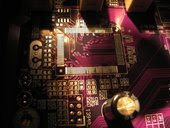Understanding Surround Sound Speaker Systems Speaker systems can add to the multimedia experience of any home theater system. It is commonly regarded as inefficient if a consumer has a quality high definition television, and does not have an upgraded surround sound system to match it. Therefore it is important to consider the benefits of owning an upgraded surround sound speaker system. This article aims to help consumers with the process of understanding the pros and cons of owning a surround sound system.
Speaker systems come in a variety of configurations. The smallest systems are simple sound bars. These sound bars are simply an array of many small speakers arranged in a line. These sound bars usually run the length of a large HDTV, and use simulated surround sound to achieve the "all around" feel of a true surround system. Some of these systems also come with a subwoofer in order to achieve lower frequencies of sound waves. These systems can fit almost anywhere, and are wall mountable. Sound bars are fairly low in cost when compared to true sound systems, due to the fact that they are comprised of only one or two units. However, they do a fair job of providing the user with the surround sound experience.
Another form is true surround. This type of sound configuration uses multiple speakers arranged around the user in order to achieve a surround effect. These systems come in 5.1, 7.1, and 9.1 configurations. These names designate how many speakers get an individual signal tailored to their location in the system. 5.1 is five and one subwoofer. 7.1 is seven speakers and one subwoofer. 9.1 is nine and one subwoofer. 9.1 is generally regarded as the finest configuration of any system, whereas 5.1 is generally the cheapest configuration. Even though 5.1 is the cheapest configuration, it is regarded as a perfectly acceptable configuration of surround sound. 5.1 is the most popular configuration due to these aspects.
Most multimedia is designed for use in systems. Movies, TV shows, and video games are all compatible with at least 5.1 surround. Even some music can be converted into surround sound. Some receivers can even perform this task in real time. Many receivers can even simulate different listening conditions, such as a concert hall, a stadium, or a recording studio. This can add to the illusion of being inside of the media being listened to, and increase the enjoyment felt by the consumerAdding a speaker system can increase the efficiency of any multimedia system.
Saturday, December 12, 2009
Subscribe to:
Post Comments (Atom)





No comments:
Post a Comment